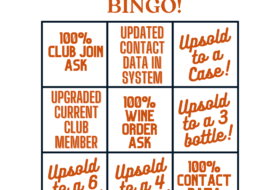We’re in a bit of an unprecedented time right now. It may be hard to think about how to draw comparisons or benchmark the data from this past year or these past few months. That doesn’t mean we shouldn’t still crunch some numbers and look to Key Performance Indicators (KPIs) as a way to measure and shape performance. The most helpful way to gain insight is to look at business through the lens of context and data. Once you have that insight, the next step (and arguably most important step) is to do something about it! As they say, you can’t manage what you don’t measure.
Why Metrics Matter:
Measuring metrics is important to any business because metrics shed light on and help guide the path forward through a view of history, patterns, and correlations. So what’s important to measure? Well, that depends on what the department is looking to track, monitor, and manage. There are certainly some that are standard benchmarks to help provide the context across a period of time. Here, we’ll discuss the data points that are great metrics to track with each Direct-To-Customer (DTC) channel in mind.
What Metrics to Measure:
Each DTC channel of Tasting Room, Virtual Experiences, Wine Club, Phone Sales, Events, and E-commerce would find it helpful to measure total gross sales and net sales. The difference between those two would be the discounts offered. If discounts are inexplicably higher than the standard or average percentage offered, it would be a good idea to delve deeper to see what is going on.
Another metric that all channels should measure is average order value (AOV) which provides information on how much a buying unit (either an individual or couple) would typically spend on an order. This helps in forecasting sales projections, especially if the guest count (or in the case of phone sales, number of successful calls placed, and in the case of e-commerce, number of visitors to the site) is also measured, as well as the sales conversation rate of those guests to a sale. Tracking bottles per order is a great metric to provide for production and run rate planning as well.
When it comes to individual channels, there are metrics specific to the nuances of how wine is sold or how customers and members are acquired. Here we’ll look at the separate channels of DTC in more detail.
Tasting Room
The tasting room and virtual experience channels in which guests are hosted by a staff member might measure metrics related to the host such as:
- sales per host
- average order value per host
- sales conversion rate per host
- wine club conversion rate per host
- data collection rate
The common denominator for tasting room conversion rates is Guest Count: the total number of guests (minus club members and trade – they aren’t likely to join a club if they already belong or have industry discounts greater than the club.) Count convertible visitors and be consistent in the method of counting (we recommend using your POS system, but at the least count using a click-counter, glasses used, tastings served, etc.) For more on this, see our blog: Getting the Guest Count Right.
Virtual Tasting (VX)
Along with the tasting room host metrics, for VX, consider also measuring and tracking the pre- and post-VX session sales, the number of screens per session, the ripple effect (the number of subsequent bookings), type of experience/VX event – private, corporate, shared group, etc.
Wine Club
The wine club channel will want to look into the average tenure of members, average lifetime value, percentage of club orders customized, cancellations across different club tiers, cancellations per sign-up host, the attrition rate (the opposite of retention rate) of members, and cancellation reasons. Operational metrics would include metrics such as credit card decline rates, number of successful shipments delivered or picked up.
Phone Sales
When it comes to phone sales there is a different set of metrics altogether because of the means of selling. What should be measured would include:
- Number of Phone Calls Made
- Number of Contacts Completed (Right Party Contact)
- Labor Hours Invested in Calling
- Revenue Generated
- Average Revenue Per Sale
- Two Response Rates
- Orders to Calls
- Orders to RPC Contacts
Events
These metrics will be different based on the type of event being hosted, but in general, these metrics are what we need to be monitoring:
- Number of attendees (by type such as club member, paid versus comp, winery attendees, etc.)
- Group sales revenue
- Ticket revenue (by type)
- Wine sales revenue
- Wine sales conversion
- Club conversion
- Data conversion
Email Marketing & Ecommerce
Email marketing and E-commerce have yet another different set of metrics that can be tracked and typically, the website or email marketing platform used can help provide this information. The email marketing metrics to be measured are:
- open rate (by hour and day)
- bounce rate
- click-through rate (by link)
- unsubscribes
- Conversion to orders
- Return on Investment (ROI)
When customers are directed to a website to interact or purchase, there are endless metrics to be measured here! These can include:
- Traffic – new and unique visitors to a page
- Sales metrics (Revenue per visitor, number of orders, AOV)
- Conversion rates
- shopping cart abandonment rate
- Stickiness (time on site, bounces, pages per visit, etc.)
- Referral Sources
Pick what metrics are most indicative of the performance the winery finds important and measure those.
Managing by the Metrics:
Understanding industry standard benchmarks for a particular region, while looking at individual winery metrics helps provide contextual information from which to either adjust or give accolades. Keep in mind the ‘regional’ part of this as Region X may have an average order value of $300, but Region Y’s is $175 and it would be unrealistic to benchmark a winery in Region Y to the average standards of X. Instead, seek to know the standard benchmarks for the winery’s region then make a comparison as to how the winery is doing against its peer set. Select a set of metrics to track and communicate these to the team along with expected performance in relation to the metrics. These will serve as the channel or department’s set of KPIs.
Adjusting strategy based on where performance is falling short takes more than simply telling staff to improve. A conversation with the staff around why they are missing the mark or what might be holding them back is important as there may be something not apparent when only looking at data. Again, context is important. Giving accolades goes hand in hand when mining for metrics. If the team is doing well, let them know! This recognition is important to incentivize and inspire. Some wineries are able to budget for rewards based on performance as well. For instance, reaching a net sales target means the team gets a pizza & wine party or each host that hits a target average order value gets a bottle of wine.
Never Stop Measuring!
Once a team achieves a set of KPIs – the job of adjusting and giving accolades isn’t over. This is a constant process of fine tuning over and over again. It’s also important to note that when managers get lazy about measuring and managing, teams may also take the same lax approach to perform based on the metrics. The more we track, the better we can understand what’s working, what isn’t and make adjustments based on the data we track. People will respect what you inspect, so the bottom line is: Measure it to manage it!




